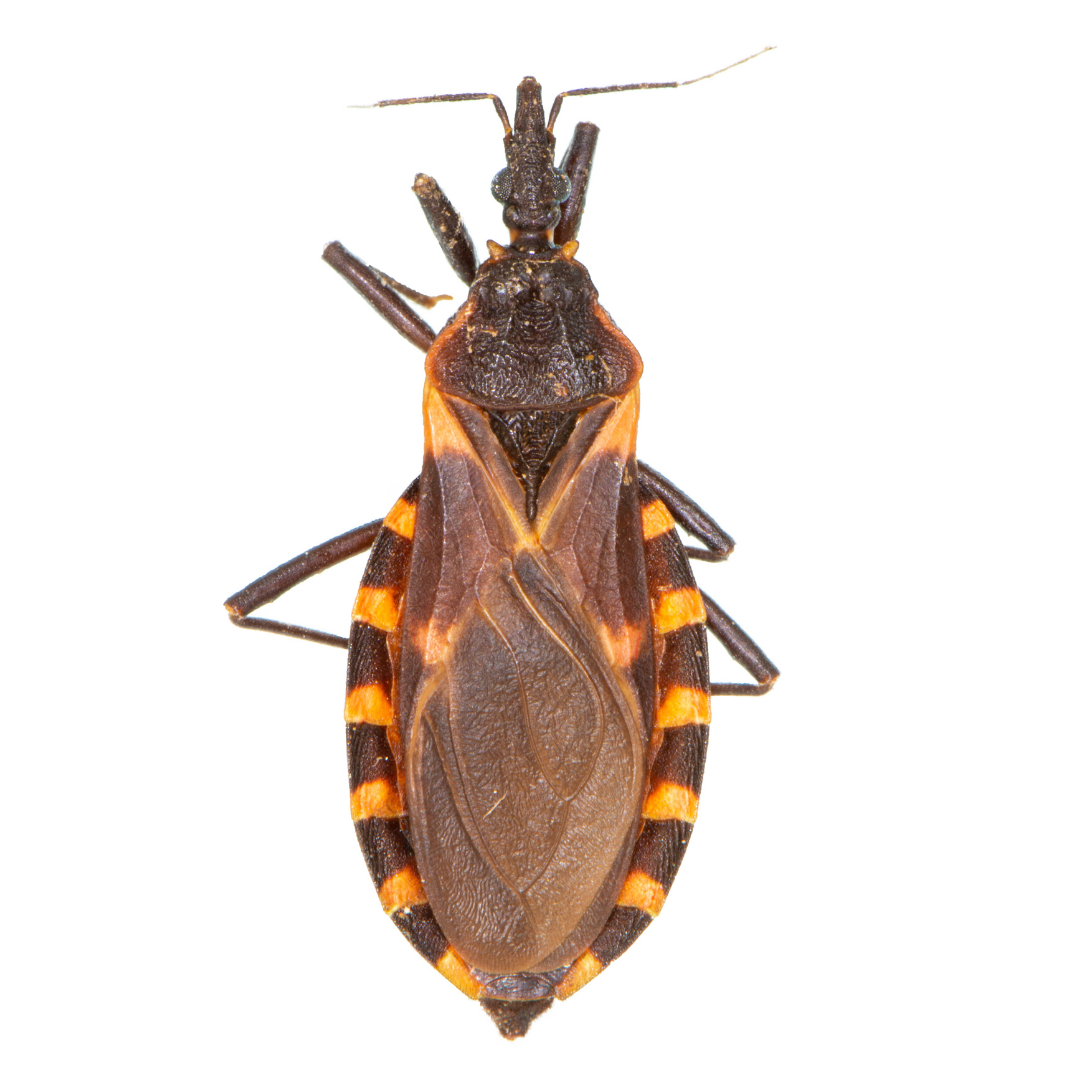
By Kait Chapman, Extension Educator in Lancaster County
The Nebraska Department of Health and Human Services recently announced the discovery of the eastern bloodsucking conenose, a.k.a. the kissing bug, in the state. Kissing bugs can pose a risk to public health by biting humans and potentially transmitting Trypanosoma cruzi, which causes Chagas disease.
First, it’s important to note that established populations of the eastern bloodsucking conenose have only been documented in Richardson County. Second, the risk of contracting Chagas disease from a kissing bug in the U.S. is low. While the risk is low, people should be aware of this insect and what to do if they come across one.
IDENTIFICATION
There are many insects native to Nebraska that may resemble a kissing bug. The eastern bloodsucking conenose is recognized by:
• Dark-colored, flattened bodies
• Cone-shaped heads
• Sharp beak-like mouths
• Elbowed-antennae
• Six reddish-orange spots on each side of their abdomen
BIOLOGY
Kissing bugs hide during the daytime and come out during the night, often when people are sleeping. During the day, they will hide in cracks around the walls or ceilings of homes, or under leaf litter and rocks outdoors.
Disease is transmitted by the kissing bug’s behavior of defecating (pooping) after they bite, typically around a person’s face. The disease-causing agent for Chagas disease may be present within the feces. People contract the disease by accidentally scratching or rubbing the parasite into the bite wound, or their eyes or mouth. In the U.S., the eastern bloodsucking conenose does not typically defecate on its host immediately after feeding, limiting disease transmission.
IF YOU FIND A KISSING BUG
First, do not touch a kissing bug with your bare hands! Use plastic gloves or a container to collect the bug without directly touching it. Clean and sanitize all potentially contaminated surfaces with a bleach solution or alcohol.
If you find what you believe is a kissing bug outside of your home and it is not suspected of biting anyone, Lancaster County residents may email photos to kchapman13@unl.edu or bring a sample to Nebraska Extension in Lancaster County, 444 Cherrycreek Road, Suite A, Lincoln during office hours M–F, 8 a.m.–4:30 p.m.
FOR MORE INFORMATION
Web article “Kissing Bugs in Nebraska” by Kyle Koch and Kait Chapman, including a “Kissing Bug Look-Alikes” graphic, is online at https://communityenvironment.unl.edu/kissing-bugs-nebraska.